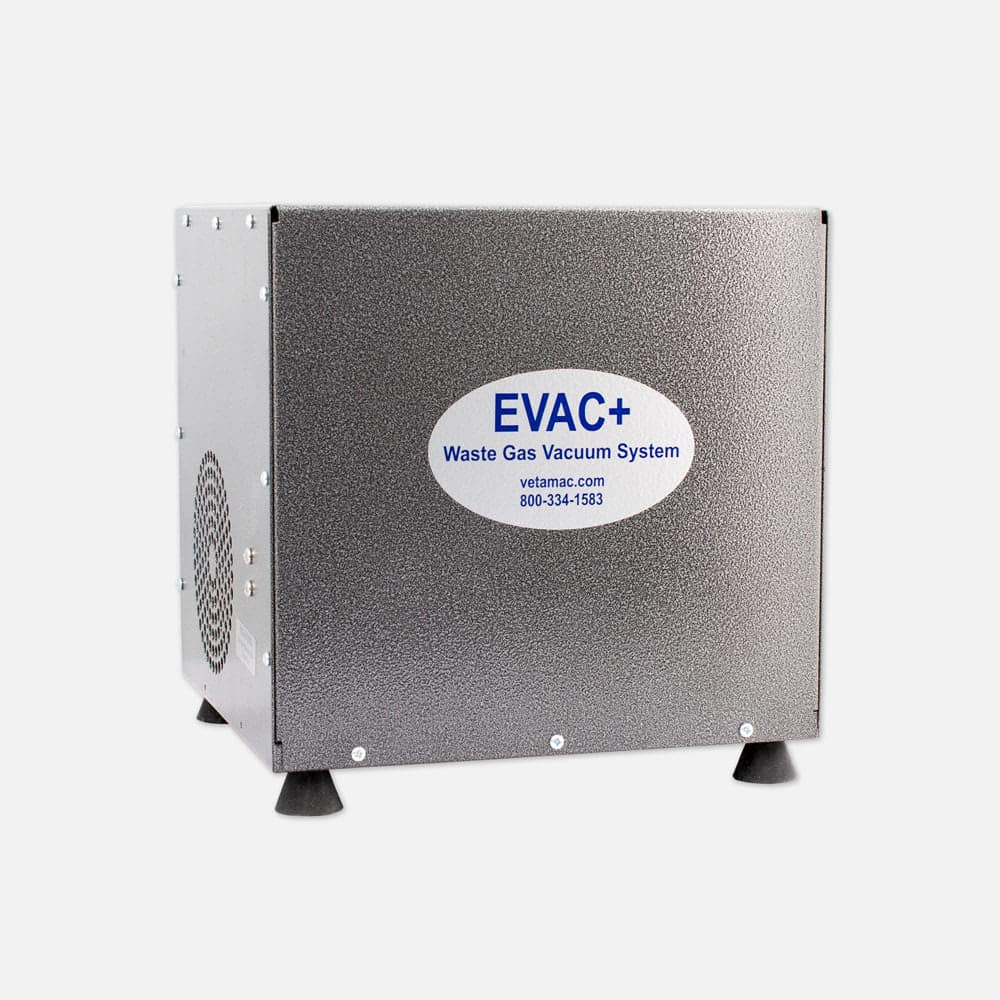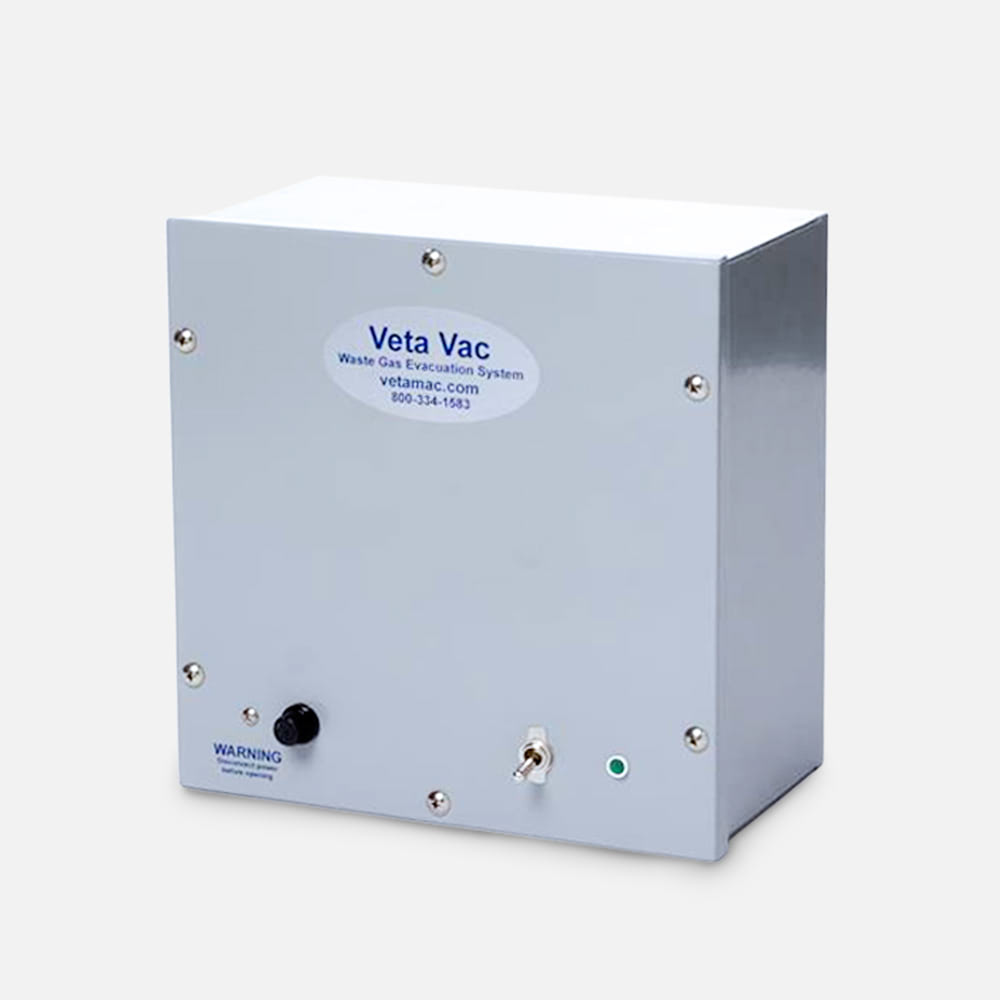Call Us
1 800 334-1583
Vol. X: Failing to Plan is Planning to Fail! – Part II

The previous issue of Vapors discussed the necessity of early planning for the installation of medical gas systems, especially oxygen. This issue will discuss planning for active waste anesthetic gas (WAG) systems.
How Active WAG Systems Work
An active system uses either air flow created by an enclosed fan or negative pressure created by a vacuum pump to remove the WAG. Both types of evacuation need piping systems to move the WAG from the anesthetic machine to the evacuation unit. The installation of these lines must be coordinated with other mechanical systems in the building.
Choosing WAG Outlet Locations and System Types
The first decision is to decide the location of the WAG outlets. These locations are usually close to oxygen stations that are used for anesthesia. They can be installed either from the ceiling or in the wall. Early planning helps avoid installation problems. At the same time, a decision must be made on the type of system-vacuum or flow. Both systems, if installed properly, will remove WAG equally well. The vacuum system requires more mechanical equipment and is generally more expensive and the vacuum pump requires maintenance. The vacuum system requires copper lines whereas the flow system requires PVC pipe and fittings. Both systems allow for easy and quick connections from the anesthetic machine to the system.
The Importance of the Atmospheric Equalizer
The most important component of an active evacuation system is the atmospheric equalizer or atmospheric interface. Regardless of the type of active WAG system, an equalizer must be used. However, the interface for a vacuum system is markedly different than for a flow system (see Figure 1). The vacuum system generates a high flow of gas at a high negative pressure of approximately-12psi (840cm H2O). This high negative pressure must be severely restricted to prevent withdrawal of gas from the anesthetic breathing circuit. Note the flowmeter on the vacuum interface in Figure 1. It is used to From Pop-Off Valve restrict the flow to just a few liters/minute. Periodically the flow of WAG into the interface from the breathing circuit will be greater than the setting on the flowmeter on the interface. The excess gas flow into the bag will be removed over a period of a few seconds. The interface can also accept a charcoal canister that will receive any WAG flow that exceeds the capacity of the bag. The evacuation tubing from the breathing circuit connects to the equalizer as well as the evacuation hose that connects to the vacuum pump.
Flow System Interface and High Flow Considerations
The interface for the flow system must be able to accommodate a very high flow (relative to the vacuum system) since the fan is moving high flow at a very low pressure (approximately 0.5-1.0 cm H2O). The equalizer in Figure 2 is open at the top and receives the flow of WAG. The high flow through the equalizer carries the relatively low flow of WAG into the line going to the fan. The normal flow through the equalizer is 15 to 25 liters/minute. This allows the equalizer to receive periodic increased flow from the anesthetic circuit.
The installation of either one of these systems will efficiently evacuate WAG and prevent exposure ofstaff to these gasses.
| Components | Vacuum System | Flow System |
|---|---|---|
| Piping | 3/8″ – 1/2″ Copper | 1 1/2″ PVC |
| Interface | Yes | Yes |
| Cost | Higher | Lower |
| Effective | Yes | Yes |
| Vetamac Provides Components | Yes | Yes |
Join Us in Welcoming Heidi to the Vetamac Team!
Heidi Lescun graduated from North Dakota State University in 1997 with a Bachelor of Science in Veterinary Technology. Upon graduation, she worked as a veterinary technologist at Purdue University’s Veterinary Teaching Hospital. In June 2000, she moved to Australia with her husband Tim, where he worked as a veterinarian in a progressive equine hospital. In August 2001, she returned to the Purdue VTH to provide anesthesia support to the large animal hospital and soon thereafter was working as an anesthesia technologist in both the small and large animal hospitals. Heidi was appointed supervisor of the anesthesia technicians in 2006. Heidi joins Vetamac in January 2015 as a service technician/sales associate servicing Northwest and Central Indiana.








